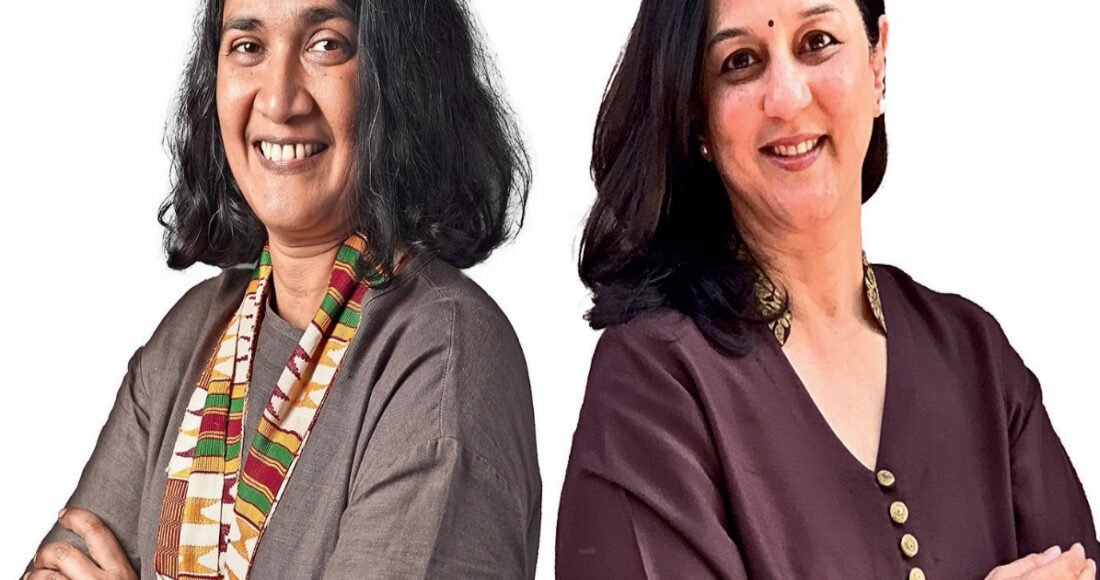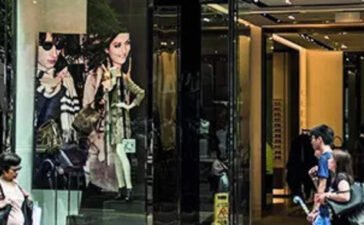In 2023, Nilekani revived the idea, rallying the director of every major scientific institution in Bengaluru to participate. The result is Sci560: Science in the City, a unique, monthslong exhibition at Science Gallery Bengaluru inviting the visitor to immerse in and mull over the city’s long-standing, layered, cross-institutional connections with science, research and innovation. On the eve of the opening, Nilekani and Phalkey spoke to Indulekha Aravind about the significance of the exhibition, the need for private philanthropy to “step up to the plate” for R&D and whether institutions like Science Gallery can play a role in combating misinformation. Edited excerpts:
One of the issues that plague research in India is the fact that public funding of R&D as a share of GDP lags many other countries. What role do you see for private philanthropy in addressing this?
Rohini Nilekani: Of course, the state needs to do more, but India also has many other things to prioritise so it’s always a tossup for the state where to put its money. But private philanthropy has no such constraints. There are so many wealthy people in India today. I feel there are many more who want to and who should give much more and one of the areas to give to is of course scientific research. We are going to have so many problems: we’ll be the oldest country in the world, we are going to be among the top 10 countries most affected by climate change. All of this is going to require serious innovation and inter-disciplinary work, which will take money, resources, talent and time. Private philanthropy can definitely step up to the plate—we’ve already seen excellent examples of it in Bengaluru.
What is the significance of Sci560?
RN: I came to Bengaluru exactly 40 years ago, in 1984. Like you, I was a journalist, and I was getting to know the city. I realised just how many marvellous institutions it has, which are funded by the state and supported by private philanthropy. Bengaluru in the past has been, in the present is and I hope in the future will continue to be the science and technology city of India. Over the years, I had been wanting to do something that would open the rarefied halls of our scientific institutions to the public. It was only when Jahnavi Phalkey-led Science Gallery came to life that my long-standing dream was able to come to fruition. Last year, we had a meeting with the heads of all the institutions to brainstorm how to bring the culture of science strongly into the public arena and we came up with the idea for this. All the institutions agreed to loan artefacts to represent their work and engage with people. I’m very happy to be able to support this and hope that lakhs of people come.
One of the pillars of Science Gallery Bengaluru (one of only seven in the world) is the idea of a museum as a public space. What have you observed so far about fulfilling that thesis?
Jahnavi Phalkey: We’re still quite young, it’s been close to seven months since we opened our doors. We’ve reduced two barriers to entry: one, no tickets; second, everything we produce in-house is in Kannada and in English. In a sense, it’s becoming the kind of public institution we want it to be but it’s supposed to be a twoway bridge between the research institution and the public at large. At this moment, opening the second way is the next step. The major chunk of that is getting the six public labs open, and we have got funding for the food and theory labs. In this phase, questions from the public domain are shared with researchers as well. We call it science with society. That will complete the circle. We’re here to create a sense of relevance and belonging for the public because at the end of the day, the bulk of the research that happens in India is funded by the state, which is taxpayer money. What is my money enabling is the minimum question a taxpayer in some way should be asking.
We are living in the time of fake news and misinformation. Do you see a role for the gallery in contesting that and cultivating a scientific temperament?
JP: The leitmotif of any such institution in the long term is to serve the task of public education so in that sense yes, this institution is meant to contribute to public debate, public opinion and public education.
(But) this is a very different time we are in right now, where there is very little room to take up a confrontation because in my personal opinion, that’s going to be counterproductive and confrontations polarise, even if you come from a place of factually correct information and truth. So the job that such institutions have is to create room for asking questions, for the young to come and find out what it means to ask good questions, and develop a sense of discernment and judgement.What are the exhibits you’re looking foward to?
RN: I know I’m looking forward to the “bheja fry” exhibit–which is supposed to be to understand how certain areas of the brain code time to understand causality.JP: I’m always excited about live experiments we can host and we’ll have at least two. That changes how you think about exhibits. All science, when it starts out, is open-ended but we learn it in school as close-ended facts though that’s not how a lab works. The other I’m equally excited about is the HT2 aircraft from Indian Institute of Science (IISc). For me, for this exhibition it’s the most important exhibit. Our curatorial note starts by saying Bengaluru is today India’s most recognised, military-industrial-academic complex and our exhibition is one way to explore why that may be the case. The aircraft embodies this because it was designed at the IISc, produced by Hindustan Aeronautics Ltd (earlier Hindustan Aircraft) and used by Indian Air Force. So you have the military-industrial-academic complex embodied in that one single object. It reflects the very rich, layered story of the city.







amoxil drug – https://combamoxi.com/ cheap amoxil tablets
cost amoxicillin – https://combamoxi.com/ order amoxil without prescription
forcan us – flucoan forcan generic
fluconazole 200mg without prescription – https://gpdifluca.com/# fluconazole 200mg for sale
order lexapro generic – this order escitalopram pill
cenforce without prescription – https://cenforcers.com/# cenforce generic
buy cenforce pill – cenforce 50mg cheap order cenforce online cheap
cialis 20 mg best price – cialis next day delivery tadalafil best price 20 mg
cialis tadalafil 20mg tablets – https://ciltadgn.com/ best research tadalafil 2017
canadian pharmacy cialis brand – https://strongtadafl.com/ cialis cost at cvs
u.s. pharmacy prices for cialis – e20 pill cialis cheapest cialis
order ranitidine 300mg generic – https://aranitidine.com/# buy zantac 300mg online
generic ranitidine – https://aranitidine.com/ buy zantac 300mg online cheap
buy viagra quebec – https://strongvpls.com/# herbal viagra sale uk
50mg viagra price – order viagra boots buy viagra generic usa
With thanks. Loads of knowledge! https://buyfastonl.com/isotretinoin.html
I’ll certainly bring back to review more. neurontin 300 para que sirve
I couldn’t weather commenting. Warmly written! on this site
This is a question which is near to my callousness… Myriad thanks! Faithfully where can I notice the phone details in the course of questions? order gabapentin generic
The reconditeness in this piece is exceptional. https://ursxdol.com/azithromycin-pill-online/
Palatable blog you be undergoing here.. It’s severely to on elevated worth script like yours these days. I really recognize individuals like you! Rent vigilance!! https://ursxdol.com/get-metformin-pills/
This website positively has all of the information and facts I needed to this thesis and didn’t know who to ask. https://prohnrg.com/product/acyclovir-pills/
I couldn’t turn down commenting. Adequately written! https://aranitidine.com/fr/cialis-super-active/
I am in truth delighted to coup d’oeil at this blog posts which consists of tons of profitable facts, thanks object of providing such data. https://aranitidine.com/fr/modalert-en-france/
With thanks. Loads of knowledge! https://ondactone.com/simvastatin/
This is the type of post I turn up helpful. https://ondactone.com/spironolactone/
This is the type of advise I find helpful.
https://doxycyclinege.com/pro/celecoxib/
This is the tolerant of enter I unearth helpful.
https://proisotrepl.com/product/cyclobenzaprine/
This is a question which is in to my fundamentals… Myriad thanks! Faithfully where can I upon the contact details due to the fact that questions? http://admin.kpsearch.com/active/admin/customer/customer_email1_birthday.asp?item=&chname=gnc&strhomeurl=https://schoolido.lu/user/adip/
Thanks for sharing. It’s first quality. http://furiouslyeclectic.com/forum/member.php?action=profile&uid=24580
I am in truth thrilled to coup d’oeil at this blog posts which consists of tons of worthwhile facts, thanks representing providing such data. https://lzdsxxb.com/home.php?mod=space&uid=5057532
buy dapagliflozin medication – order forxiga online dapagliflozin 10mg over the counter
generic forxiga 10mg – https://janozin.com/ buy forxiga 10mg generic
purchase orlistat without prescription – purchase orlistat for sale buy orlistat 60mg pills
This is the kind of literature I truly appreciate. http://polishcrazyclan.ugu.pl/member.php?action=profile&uid=356922
This is the compassionate of criticism I positively appreciate. http://3ak.cn/home.php?mod=space&uid=230353